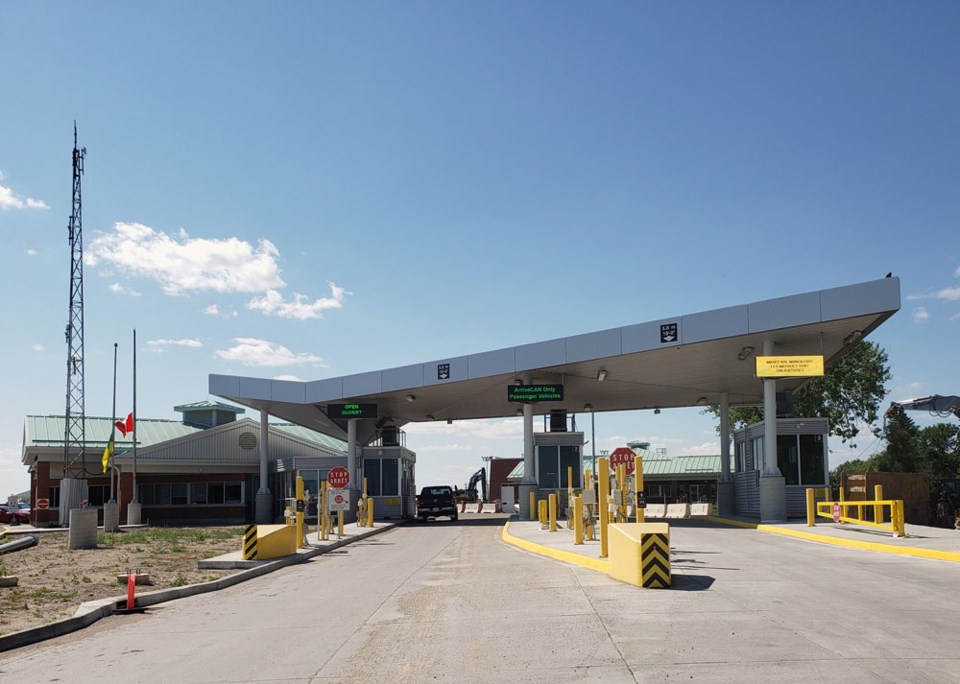For many southeast Saskatchewan residents, it was the news they’ve been waiting months to hear.
Fully vaccinated Canadians could cross the Canada-U.S. land border for non-essential purposes, such as shopping, visiting attractions or watching a concert or a favourite sports team.
For many Canadians who have property in warmer U.S. climates, such as Arizona, Florida and Texas, the news likely couldn’t have come at a better time, as they had been itching to head south of the border after they couldn’t be snowbirds last year.
Others were eager to go shopping in Minot, or pick up parcels that have accumulated in Noonan.
It’s been toughest for those who have family in the U.S. that they haven’t seen since March 2020. Those visits on the border helped, but they just weren’t the same. Family separation is something that should be considered if we ever find ourselves in this situation again.
Line-ups at many border crossings were understandably long, but if people are that eager to venture to the U.S., then they should expect a very long wait.
Seeing the Canada-U.S. border shut down for so long has been one of the stunning developments of COVID-19. For many, it’s been a long 20-month wait for the border to reopen.
When the border was closed to non-essential traffic, most understood why it was happening. And most seemed to want the border to remain closed for much of the past 20 months. But there have been growing calls for the border to be open again.
Frustration grew in August, when fully vaccinated Americans were allowed to travel into Canada for non-essential purposes, but Canadians who had received two shots of COVID-19 vaccine couldn’t venture into the U.S.
It’s been particularly tough for those who live in border communities, such as Portal and North Portal, where the border closure has really hit businesses hard. Revenues dried up.
While there has been no shortage of Canadians eager to cross the border into the U.S. this week, it’s still not an easy trip. You need to produce proof of vaccination. And if you plan on staying in the U.S. for a considerable amount of time, then you need to show another negative test to get back into Canada.
Not exactly as simple as it was back in 2019, when you had to wait your turn in line, show your passport, answer a few questions and be sent on your way.
And while there were long lineups, the novelty will wear off before too long, and people won’t be quite as eager to jump through hoops to be in the U.S. if the current regulations remain.
That’s going to be one of the lingering short-term questions about the border reopening. How long will we have to show proof of a negative test?
The current border regulations will remain in effect until at least Nov. 21, and the governments might decide to lift requirements then, but they could choose to wait another at least another month before making it easier to cross the border.
The vaccination requirement is going to be around for some time. And it’s likely one of the reasons that a lot of people have been vaccinated – the desire to travel where and when they please. With 80 per cent of eligible Saskatchewan residents now fully vaccinated, the number of people unable to travel is ever shrinking.
We’ve realized the difference between what is essential and what is a luxury during the past 20 months. Travelling to the U.S. to go shopping in Minot or to watch a Minnesota Twins baseball game is ultimately a luxury.
It’s also taught us the importance of not taking those things that we enjoy for granted. For a lot of people, that first trip back into the U.S. is going to be special.
Hopefully we’ve seen the end of the border closures, and eventually, it will be easier for people to travel back and forth between the two countries.
And for those who live in close proximity to the border, hopefully it will be another step in the economic recovery.








